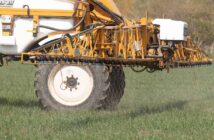The Agricultural Industries Confederation (AIC) has welcomed the FACTS communication, issued on 3 August 2021, which follows the release of the Environment Agency’s position statement regarding the Farming Rules for Water. This statement provides FACTS and FAR (Feed Adviser Register) advisers and their clients with further background on meeting the legislative requirements ahead of autumn nutrient management planning.
Jane Salter, head of Environment Policy at AIC, says, “The AIC, industry stakeholders, and government enforcement bodies have been discussing the changes that will be required over the short, medium, and long term, to ensure nutrients can be applied to land in an effective and timely manner, and to minimise the risks of losses of nitrate and phosphorus to water and the wider environment.
“Our common objective is to ensure the best environmental outcome, while making soils and farms increasingly resilient. The Farming Rules for Water require good practice on-farm, but blanket prescriptive approaches will not be the solution for all farms or situations.
“The FACTS communication has attempted to resolve concerns around how to interpret planning for crop nutrient needs, and how to relate the planning to managing the risk to water, but some questions remain. Advisers and farmers will still need further support and guidance to help them to make the transition to continuous improvement in nutrient use, expected by these new-style outcome-based regulations.”
Professional advisers and farmers will be increasingly expected to use Nutrient Management Plans proactively, to ensure crop nutrient requirements are met but not exceeded, and to identify and manage any risks to water and air from applied nutrients. The application of organic materials to land, seasonal nitrogen needs, and managing soils with high phosphorus levels will need careful consideration, alongside where and how nutrients may be lost in each field.
“Ultimately the aim is to improve Farm Nutrient Balance, with clear KPIs and risk management tools to measure progress, in order to deliver an increasingly sustainable food chain and protect the environment. With our partners, AIC is leading the conversation with the whole supply chain around the development of these plans and metrics for delivery over the coming decade,” adds Mrs Salter.




